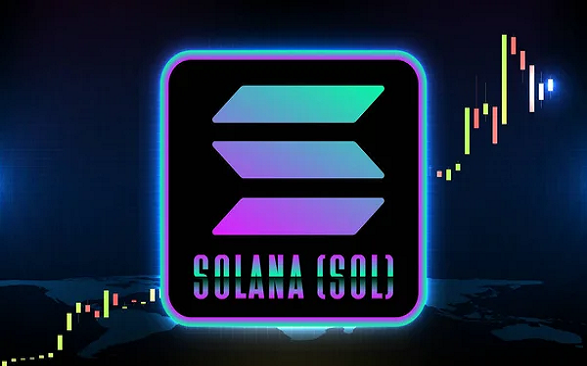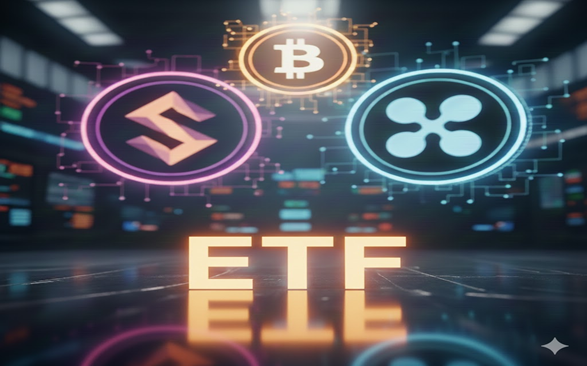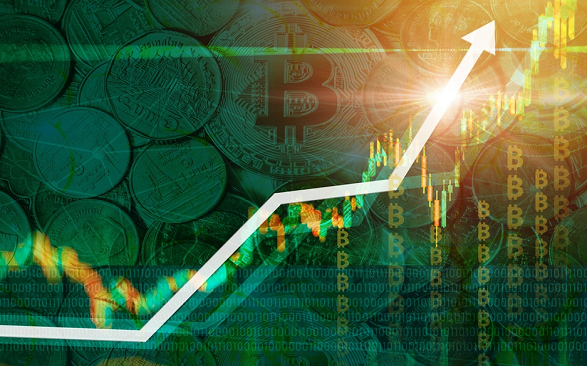Last month, Solana (SOL) achieved a remarkable feat, reaching an all-time high of over 120 million monthly active addresses. This milestone represents a 42% increase from the previous month, indicating the network’s escalating popularity and expanding user base.
The primary driver behind this surge is the escalating interest in meme coin trading on Solana’s platform. Key players like Pump.fun and decentralized exchange Raydium have significantly contributed to this growth. Notably, Pump.fun generated an impressive $30.5 million in revenue, while Raydium facilitated trades exceeding $30 billion throughout October.
This article examines the significance of Solana’s adoption acceleration and its potential impact on SOL’s price.
Read Also: Predictions and Analyses: Bitcoin Price before and after the US Election
Understanding Solana’s 120 Million Active Address Milestone; Dwarfing Ethereum
An active address in cryptocurrency and blockchain refers to a unique wallet address that has engaged in a transaction, either sending or receiving assets, within a specified time frame, typically 24 hours. Active addresses serve as a key metric to gauge the adoption, usage, and overall health of a blockchain network, such as Solana, Ethereum, or Bitcoin. It indicates the number of unique users interacting with the network, excluding inactive or dormant addresses, providing valuable insights into the network’s growth, user engagement, and potential market trends.
Solana has been demonstrating remarkable growth since the end of 2023, surpassing Ethereum in several critical metrics. By 17 September 2024, Solana boasted impressive numbers, solidifying its position as a leading blockchain platform. Notably, Solana’s daily active users has reach 3.25 million, while Ethereum’s daily active user base stands at approximately 410,000.
In terms of daily transactions, Solana dominates with 35.99 million, eclipsing Ethereum’s 1.13 million. Moreover, Solana’s monthly new addresses exceed 56.31 million, dwarfing Ethereum’s 7.18 million.
Solana’s metrics show great growth, indicating a strong upward trend, and leads over Ethereum in DAU, DT, and MNA suggest increasing market dominance. The rapid growth in DAU and MNA indicates a high adoption rate, potentially driven by Solana’s scalability, usability, and innovative applications, and the increasing number of users and transactions creates a positive feedback loop, attracting more developers, applications, and users to the platform.
Read Also: Tron (TRX) Price Increase: Key Factors Behind the Surge
Solana’s Architecture: How It Enhances Scalability and Performance
Solana’s architecture consists of three interconnected aspects: consensus achievement, transaction processing, and smart contract management.
Solana achieves consensus through a customized Delegated Proof of Stake (dPoS) mechanism complemented by the Proof of History (PoH) algorithm, enabling thousands of transactions per second. The PoH algorithm provides a verifiable historical record, reducing consensus time and improving network efficiency. Solana’s transaction processing is optimized through its Pipeline mechanism, which leverages pipelining to process transactions in parallel, achieving confirmation times under one second.
Solana’s smart-contract approach uses accounts and programs, with two types of accounts (executable and non-executable) and two types of programs (native and on-chain). Solana’s parallel smart-contracts runtime, Sealevel, enables concurrent contract processing, improving network efficiency.
Solana, therefore, boasts several key strengths compared to Ethereum. One of its most notable advantages is its rapid processing speed, making it one of the fastest blockchains available. While Ethereum processes around 15 transactions per second, Solana handles an impressive 2,600 transactions per second, thanks to its unique consensus mechanism. This speed advantage translates to lower fees and a better user experience for applications built on Solana.
Solana’s Proof of History consensus mechanism is not only fast but also eco-friendly, consuming less energy than two Google searches per transaction. Additionally, Solana’s low fees and rapid throughput have fueled explosive user growth since 2023, surpassing Ethereum in key growth metrics by the end of that year.
While Ethereum dominates the NFT space due to its established user base and supporting services, Solana’s fast speeds offer a superior user experience and lower fees. Solana’s NFT ecosystem has seen rapid growth thanks to its scalability, enabling faster NFT transactions.
Ultimately, Solana’s advantages in speed, scalability, and eco-friendliness make it an attractive alternative to Ethereum, particularly for NFT creators and crypto game developers seeking fast and affordable transactions.
Read Also: The US Inflation-Crypto Conundrum: What It Means for Investors and the Future of Digital Assets
Market Sentiment and Price Implications by History
Solana (SOL) launched in March 2020, trading below $1 initially. Its price gradually increased as the project gained attention, reaching $10 in February 2021 and $50 by May 2021. After a minor market correction in mid-2021, SOL recovered and rallied, driven by positive developments and growing interest. By November 2021, SOL peaked at over $250. However, it underwent consolidation and correction in late 2021 and early 2022, stabilizing in the $100-$150 range.
In 2022, SOL’s price declined sharply, settling in the $30-$40 range before dropping to $8 following the FTX collapse. In 2023, SOL slowly recovered, consolidating in the $20-$25 range. Optimism returned in mid-2023, with SOL breaking through the $30 mark in July and surging past $100 in October. By March 2024, SOL had broken through the $200 barrier, echoing its 2021 rally. Throughout its history, SOL’s price has reflected broader crypto market trends, regulatory developments, and growing interest in the DeFi space and blockchain scalability.
At the time of writing, Solana price is over $203, climbing by over 8% in price appreciation in the last 24 hours. In the current bull season, Solana appears poised for significant growth. Analysts cite several factors supporting this bullish outlook, including on-chain analytics, social dominance, and market trends.
Solana’s Total Value Locked (TVL) has consistently grown, indicating increasing adoption and usage of its decentralized finance (DeFi) protocols. Social sentiment and search trends also suggest growing interest and confidence in Solana.
Key catalysts for Solana’s growth include the introduction of sUSD—a stablecoin backed by low-risk assets—and potential spot ETF approval by 2025. Institutional interest and investment product demand are also on the rise. Technical analysis reveals a pattern of lagging behind bitcoin, followed by strong rallies. With growing TVL, robust social sentiment, and significant bullish catalysts, Solana’s outlook remains optimistic.
As bitcoin leads the market, Solana could follow with a promising impact, making it an exciting asset to watch in the upcoming bull market cycle.
Read Also: SOL is now 5th largest cryptocurrency after a 900% annual rally
Patterns of Historical Positive and Negative Correlations
Historical correlations between active addresses and price movements in cryptocurrencies, particularly bitcoin and Ethereum, have shown intriguing patterns:
Positive Correlations:
- Increased active addresses often precede price rallies.
- High active address counts tend to coincide with market tops.
- Active address growth rates can signal impending price movements.
In 2017, bitcoin’s bull run was preceded by a surge in active addresses while ethereum’s 2021 price rally coincided with increased active addresses.
Negative Correlations:
- Decreasing active addresses can indicate price downturns.
- Low active address counts often precede price bottoms.
Notable Observations:
- Active address counts can confirm or contradict price trends.
- Changes in active addresses can foreshadow price movements.
- Correlations vary across cryptocurrencies and market conditions.
Limitations:
- Correlations do not imply causation.
- Active address metrics can be influenced by factors like airdrops or spam.
- Market dynamics constantly evolve.
Challenges and Limitations Solana Faces
Solana, despite its scalability advancements, faces criticism for centralization and complexity. The network’s reliance on a limited number of validators raises concerns about potential vulnerabilities and control points.
Additionally, Solana’s sophisticated technology and architecture can be challenging for newcomers, presenting a steep learning curve for developers. This complexity may hinder adoption and innovation, limiting Solana’s potential.
Security risks and network outages are also significant concerns. While Solana has implemented various security measures, no system is completely immune to vulnerabilities. As the platform grows, it may attract malicious actors, posing risks to users and applications.
Moreover, Solana has experienced occasional network outages, resulting in delays, disruptions, and financial losses. Although the development team is addressing these issues, network stability remains a concern.
Solana also faces stiff competition from other blockchain platforms, including Ethereum and Binance Smart Chain. These networks continuously evolve and innovate, challenging Solana’s growth and relevance.
Read Also: Ethereum and Altcoins: What are the Opportunities in the Altcoin Market?
Emerging Trends and Opportunities in the Solana Ecosystem
The Solana ecosystem is experiencing rapid growth, driven by mainstream adoption and innovative applications. Scaling innovations, such as sharding, aim to achieve over 700,000 transactions per second, making Solana an attractive platform for widespread use. Additionally, user-friendly mobile and web experiences are being developed to onboard new users, while real-world interoperability and network security enhancements are underway.
Solana has established itself as a major player in the NFT market, thanks to its low-cost and fast transactions. In Q2 2024, over 98 million new NFTs were minted on the platform. Memecoins have also gained popularity on Solana due to their entertainment value and accessibility. Decentralized exchanges like Jupiter DEX and automated market makers like Raydium are thriving on Solana, leveraging its high transaction capacity and low fees.
Analysts predict a bullish trend for Solana in 2024, driven by the Bitcoin halving event. Coinpedia forecasts a potential record high of $500, while DigitalCoinPrice expects Solana to break its previous record, reaching $392 by year-end. However, CoinMarketCap is less optimistic, predicting an average price of $86. Other forecasts range from $90 (Coinpedia’s bearish scenario) to $669 (CoinPriceForecast’s end-of-year high), with CryptoNewsZ and CoinJournal predicting averages of $109 and $226, respectively.
Looking ahead, Solana could continue to grow toward mainstream blockchain adoption. With its scalable architecture, low transaction fees, and innovative applications, Solana is well-positioned for a greater future.
As the ecosystem evolves, expect increased developer momentum, consumer and enterprise adoption, and further expansion into the NFT market and DeFi space.
Read Also: What is really behind Solana’s emergence as the leading blockchain ecosystem in 2024?
Solomon Victor is a Technical Analyst who is also knowledgeable about various aspects of blockchain and cryptocurrency.
Discover more from Crypto Asset Buyer
Subscribe to get the latest posts sent to your email.




